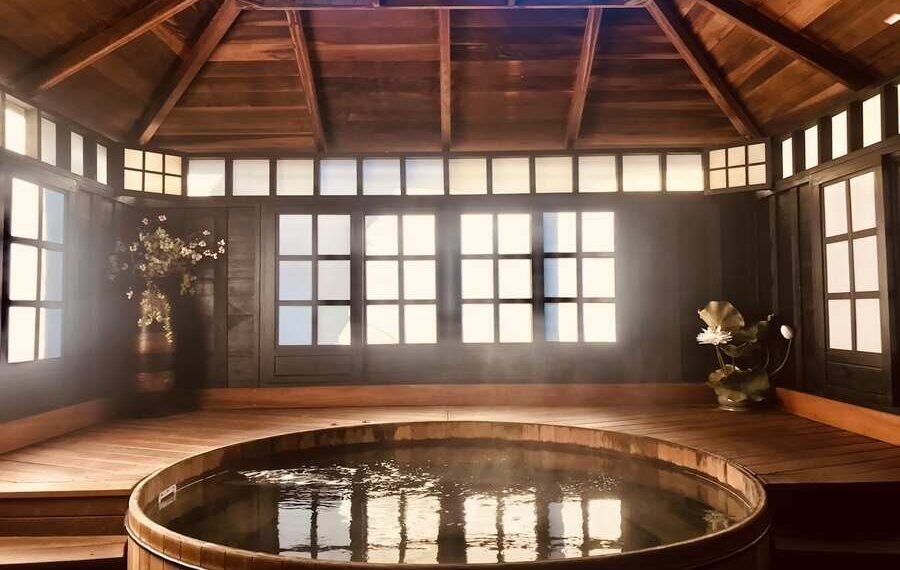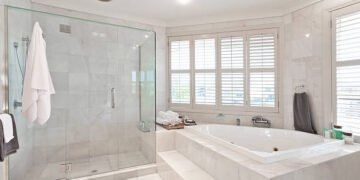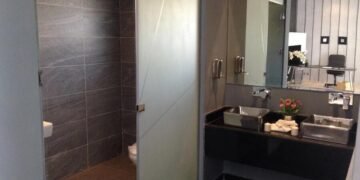What could be a better therapy to unwind the stresses of a long hard workday than soaking yourself in a relaxing hot tub, right? Healthline talks about the various benefits of creating a personal spa with a hot tub.
These include stress and pain relief, deeper sleep, muscle relaxation, improved insulin sensitivity, and better cardiovascular health. Some people should avoid using a hot tub, including those with skin injuries, heart disease, urinary tract infection (UTI), and pregnant women.
Perhaps you’ve weighed your options and want to have a personal hot tub to escape the strains of daily life. Most people on this journey plan on having the hot tub installed inside their home. After all, anywhere else (such as a garage or patio) would carry with it privacy concerns.
If you’re thinking of an indoor hot tub installation, there are some important things to consider. In this article, we will delve deeper into six crucial factors to ponder upon before making a decision.
Determine the Possibility
This has to be the main deciding factor in an indoor hot tub installation decision-making process. Is there any room/space in your home that will comfortably fit a hot tub? According to Aqua Clear Hot Tubs, made-to-order or customized variants of hot tubs are available.
However, hot tubs in general are indeed massive, even if you consider the smallest size – the tiny 2 ideal for two people to relax. Some people build entirely separate rooms to have their hot tub installed. Others choose a spare room that’s remained unused for a long time.
In case you want to have the hot tub installed inside an existing room, ensure the doors are wide enough to fit in the structure. Ideally, wide-style doors like French doors or sliding doors would accommodate a hot tub easily.
If no room has doors wide enough to fit in a hot tub, you may have to consider an outdoor installation or a home extension project.
Additionally, consider your area’s climate. In other words, there are certain parts of the US where the winters are extremely chilly and erratic at times. A good example of it would be the Winter Wonderland of Bend in the vibrant state of Oregon.
If someone is looking for high-quality hot tubs in Bend Oregon, they would risk having it damaged due to snow if installed outdoors. After all, the city receives over 33 inches of snow on average!
Plus, would the experience even be as enjoyable and relaxing under inclement weather? it would make more sense to have the hot tub installed indoors.
Choose the Right Tub and Consider Ventilation Needs
Practically any hot tub model would make it into your indoor space, but some are more suitable than others. So, choose a model from the catalog that compares well when the shape, size, and weight of the hot tub are considered against the room.
Also, the power requirements for different models may vary – some need higher voltage than others. The room should be able to support the power needs of the spa. Moreover, a hot tub releases a lot of moisture into the surrounding air. This will gradually linger and convert into mold or chemical gas without proper ventilation.
You must ensure that the room you choose for your hot tub has sufficient ventilation options. Simply having a few wide casement-like windows is enough. However, an extraction fan that draws out the chemical gas and moisture will add another layer of ventilation.
Consider the Walls and Your Ceiling’s Height
As mentioned previously, hot tubs tend to release huge amounts of moisture. As the same disperses into the air, it can damage the wall. Regular drywall is not designed to stand under the dampening pressure of moisture for extended periods.
Even with proper ventilation, the room’s walls will be exposed to prolonged humidity. So, it’s important to ensure its walls can handle such a damp environment. When the vapor coverings of the walls are intact, the chances of dry rot become minimal.
What would be some great wall options for a room that must accommodate a hot tub? The best walls would be water-resistant drywall, cement, and glass. Furthermore, remember that hot tubs require adequate space above them (after the cover is lifted). In case of a low ceiling, you may struggle to lift off the cover.
To avoid fighting with the cover whenever you’re in the mood for a relaxing soak, compare the structure’s height to that of the room’s ceiling. This way, you can get in and out of your spa with ease.
Think About Maintaining the Water
The first crucial point here is that hot tubs require a water source that is easily accessible and reliable. This is just the beginning – the water (and the tub) must be maintained properly. Keep in mind that you’re easily looking at 20 years of investment.
Much like any healthy pool, your hot tub will also need high-quality chemicals to stay clean. Just do not mix the two and interchange the chemicals used for pool cleaning! Choose the right chemicals suited to clean a hot tub, but avoid complacency.
In other words, you may have to go above and beyond chemicals and use routine spa cleaning services. Regular professional maintenance will keep your spa safe and healthy (ensuring fewer repairs or replacements).
Wrapping Up
Finally, let us just close off by stressing the importance of a hot tub cover. From the pointers above, you must have an idea that a cover is a given. The reason it is essential is to protect the tub’s inside shell from damage.
Besides that, it would save you energy costs as less heat would escape the tub while it sits in a dormant state. Have you made your decision yet? The global hot tub market is growing at a CAGR of 9.82% and will become worth $11,901 million by 2031.
More and more people are realizing the benefits of this wonder structure and having it installed for personal relaxation and health benefits. Now (more than ever) is the best time to jump onto this bandwagon.
















